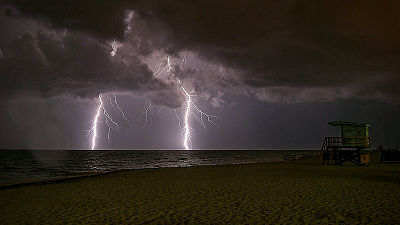Does the sun's black spot become zero for the first time in about 100 years, great influence on the earth's climate

It is known that when solar activity declines, it has been known that it greatly affects the weather of the earth, but it has become clear that no black spots have been observed on the surface of the sun for the past month. The number of sunspots is also related to the strength of magnetism emitted from the sun, it seems to be a pretty important event.
The sunspot data has been gathered since 1749 and it was in June 1913 that the sunspots did not disappear in the same way last time. The sunspot is that the activity slows every 11 years, and the number drops to the level equal to zero. However, normally it seems that it will not be a problem because the activity cycle returns to the original quickly. But the first seven months since entering this year, there are only 3 average sunspots, and in August it finally became zero.
What is the impact on the earth by this, in the end? The impact on the earth is as follows.
DailyTech - Sun Makes History: First Spotless Month in a Century
First, in 2005, two scholars from the National Solar Observatory (USA) observed the magnetic change of the sun, and as a result announced a paper predicted that the number of sunspots will be zero within the next ten years Although it made a big controversy, in the end it was refused to be published in a magazine, it was laughing as "a conclusion without confirmation". William Livingston, the primary author of this paper, says, "Although refusal may have been justified at the time, recent data shows the correctness of my theory."
And what happens when the number of black spots decreases is that there is a possibility that the temperature will drop.
Because climate scholar Anthony Watts says that the influence of the sunspot on TSI (total solar flux density) is negligible, but the decline in the sun's magnetosphere affects the formation of the Earth's clouds, It also has an impact. This theory was originally proposed by Mr. Henrik Svensmark, a physicist, and according to the experiment "SKY" conducted by Svensmark last year,Galactic cosmic raysHas proven to increase the formation of molecular clusters that promote cloud growth.
Furthermore, according to Ilya Usoskin, a solar physicist at the University of Oulu, Finland, there is a correlation between the cosmic rays and the amount of clouds on the earth, "it seems that more radiation equals more clouds".
The National Oceanic and Atmospheric Administration (NOAA) reported that there was a small sunspot on August 21, but the institution observing all the sunspots of all other says "There was no sunspot in August We report it.
What on earth is going to happen?
Related Posts:
in Note, Posted by darkhorse







